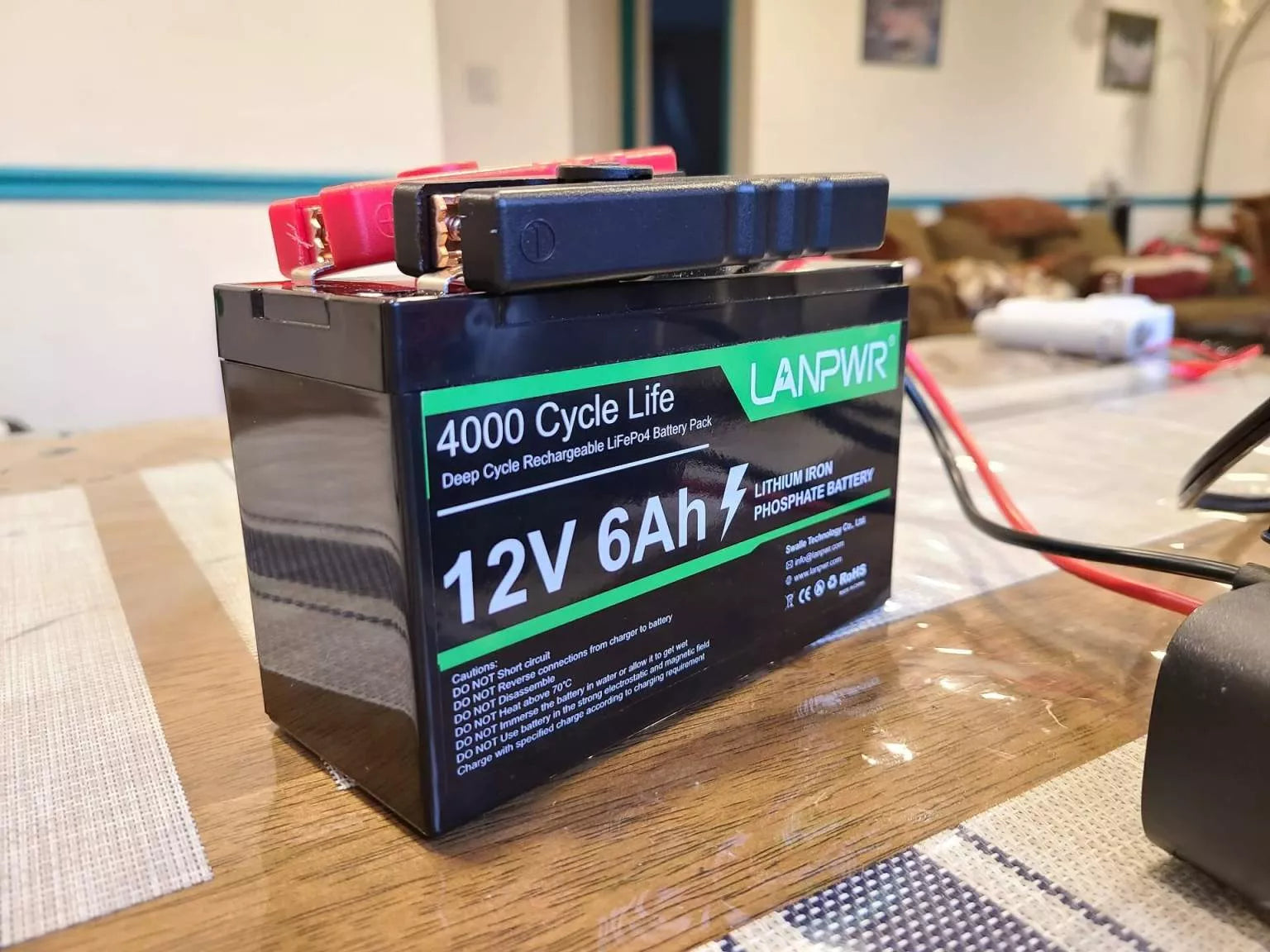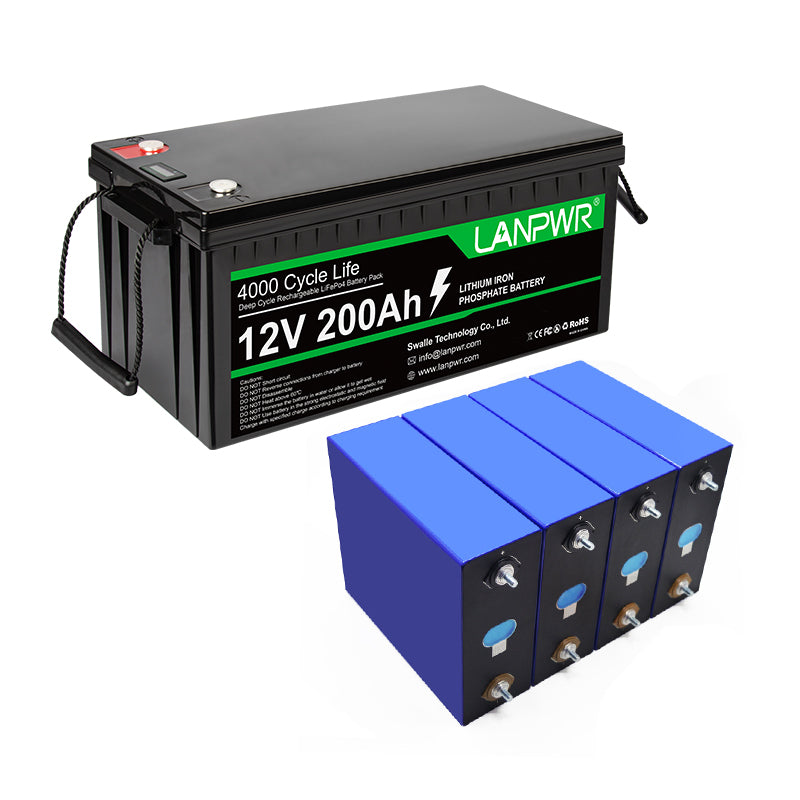The benefits of Lithium Iron Phosphate (LiFePO4) batteries have become increasingly popular for their robust life, safety, and efficiency. With increased applications in use, a key requirement is the study of charging or discharging habits and how their lifetime can be optimized. A prevalent concern regarding discharging a LiFePO4 battery while charging it (pass-through charging), is if this can damage or reduce its cycle life. Read on for an in-depth look at this subject including its impact, reasons, and tips to keep your LiFePO4 battery healthy.
What is a LiFePO4 Battery?
LiFePO4 is an abbreviation for Lithium Iron Phosphate, a type of lithium-ion battery constructed using iron phosphate as the cathode material. LiFePO4 battery- A popular choice of electric vehicles/ renewable energy and coarse e-devices because they are more stable with longer cycle life.
Key Characteristics
Safety: LiFePO4 batteries are one of the most stable lithium-ion battery types and less likely to suffer from thermal runaway.
Lifecycles: They can usually last 2,000 to over 5,000 charge-discharge cycles -much more than other lithium-ion batteries.
Charging and Discharging: The efficiency of these batteries is also high, with typical charge & discharge efficiencies tend to be 95%.
Eco-friendliness: due to the absence of toxic metals - cobalt they have less impact on the environment.
This article will mainly focus on the operation of the charging & discharging (inside) mechanism, but it would be interesting to know what is there behind an external charger.GetMapping started inside the Charging Mechanism External chargers are not very amusing.
Charging Process
Li ions move from the cathode (typically LiFePO4) to the anode (typically graphite) through the electrolyte during charging. This process saves energy in the battery.
Discharging Process
When charging, lithium ions move from the cathode to the anode as energy is stored in the battery; during discharging they flow back releasing their stored-up energy that can be used to power mobile devices.
Charging and Discharging at the Same Time
Charging and discharging at the same time is in effect when a battery operates providing power to load (lithium ions move to the cathode) while it is being charged(lithium ions are moving towards anodes). This puts the battery in a potentially volatile, unfamiliar environment.
Effect On Life Cycle
Increased Internal Resistance
Another effect of charging and discharging simultaneously is that the battery exhibits increased internal resistance. This resistance creates heat which can be a contributing factor to battery (particularly the degradation of the electrolyte and electrodes). This can in turn degrade the cycle life of your cells over time.
Electrochemical Stress
It puts additional electrochemical stress on the battery because it's charging and discharging at once. Since lithium ions bounce back and forth along their expected journey through the battery, moves like this can throw things off balance inside of it - leading to hot spots. This, in turn, may create lithium plating on the anode and other side reactions to deterioration of the battery.
Temperature Effects
When discharging and charging at the same time, then heat generation is a big issue. Higher temperatures can make the electrolyte and electrode materials degrade faster thus decreasing the overall lifespan of a battery. Thermal management must be carefully optimized to reduce these consequences.
Depth of Discharge (DoD)
Depth of discharge (DoD) is one important characteristic that affects battery life. Shallow discharges (to say 30% or so), on the other hand, will not stress the battery much at all and can extend its life. This normally takes years, but if you are discharging the battery while charging it (such as many work EV drivers do), keeping shallow cycle lives is more difficult and can lead to deeper cycles which shorten a lithium-ion-based cell's life.
Charge and Discharge Rates
Stress on a battery elevates further at high charge and discharge rates, particularly when simultaneous. Fast charging and high-current discharging produce heat, which imposes more electrochemical stress thus further shortening the cycle life. This can be minimized by ensuring that the charge and discharge rates of a battery are optimal.
Studies and Findings
Research Insights
Much of the related research focuses on LiFePO4 batteries under charge and discharge simultaneously. Most studies agree that the practice can reduce the number of cycles required until battery degradation (for reasons given above)
Industry Practices
A lot of industries would rather charge and discharge independently to extend the life cycle endurances on the batteries which are being) charged/discharged simultaneously. Where for example electric vehicle manufacturers typically design the battery management system (BMS) to avoid or limit this scenario.
Real-World Examples
Solar Energy Storage: In the case of a solar energy storage system, the battery gets charged from the electricity generated by Solar Panels during the day and gets discharged at night. A well-designed system tries to keep a minimal point of simultaneous charge/discharge states, therefore extending the battery life cycle.
Portable Devices: Manufacturers of portable devices like laptops and smartphones, require a charging algorithm that will avoid simultaneous chargings as well as discharging for better battery life.
How To Take Care Of LiFePO4 Batteries Best Practices
Do Not Charge and Discharge at the same time
If possible, design your system to never charge and discharge at the same time. This can be done via energy management and proper scheduling.
Thermal Management is Key
Make sure your battery system has good thermal management to reduce the heat produced during charging and discharging This distresses either deactivating (immensity tongues, airflow) or sane cooling( a supporter.0 posts HttpResponseRedirect prevents any terminal code exodermises from token generated?
Keep Charge/Discharge Rates Modest
Do not charge or discharge very highly charged rate so it will create lower stress on the battery. Charge at moderate rates consistent with the recommendations of the battery manufacturer.
BMS stands for Battery Management System. Engage your BMS, let it do its job!
A reliable BMS will monitor and control the charging and discharging, ensuring maximum power as well as the lifetime of your battery. Overcharging is prevented, over-discharging too and the temperature control works quite well.
Daily Monitoring and Maintenance
Check for voltage, current, temperature, and capacity of the battery regularly. Must recalibrate once a week, if left lonely and deserted the battery may become sick!
Plan for Depth of Discharge
So, it is advisable to avoid deep discharges as much as possible. We noted also, that allowing the battery to sit below 20% regularly can reduce its cycle life as well.
Applying Duty Cycle and Application
Design the battery system according to duty cycle and application spec In other words, if the application requires regular cycling, select a battery with a higher cycle life rating providing your system does not often both charge and discharge at the same time.
Summary
LiFePO4 battery charging and discharging at the same time can result in its cycle lifespan shorted, it is because of internal resistance increase, electrochemical stress impact; high-temperature effect as well as deeper depth of discharge. Some Ideas to Reduce the Damage and Extend LiFePO4 Batteries Life-Span.
Correct system design, good thermal management, slow charge and discharge rates, as well as a strong BMS solution, are essential to keeping these batteries alive. When possible, avoid the stress of charging and discharging at once that these principles impose on your batteries; in doing so you can increase their shelf life to ensure they are dependable solutions for an even more reliable range of applications.














Leave a comment
This site is protected by hCaptcha and the hCaptcha Privacy Policy and Terms of Service apply.